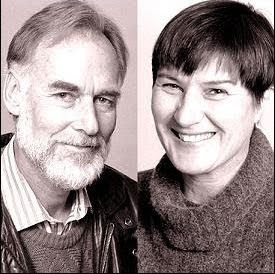
It was about six in the evening when a family friend went to have dinner with Half (pronouced "Hall-ph") and Susanne Zantop at their home in Etna, New Hampshire. The Zantops, both originally from Germany and professors at Dartmouth College, were popular with students and had begun to consider retirement. The house was eerily quiet and she quickly worried that something was wrong. The grisly scene inside confirmed her suspicions. Both Half and Susanne had been brutally stabbed to death. The culprit(s) took $340 from Half's wallet, but left other, more valuable items behind. Also left behind were footprints, fingerprints, and the sheaths from two SOG SEAL 2000 combat knives.
Police originally thought it might be a crime of passion linked to an affair, but that theory was quickly disproved and the Boston Globe had to run a retraction on the story. Investigators soon got back on the right track, however, by tracing the knife sheaths back to their original owners -- two high school classmates, James Parker (16) and Robert Tulloch (17). The boys, who were never known to cause any trouble, said that they had purchased the knives to build a fort, but sold them to a surplus store when they proved to be too heavy. Tulloch had recently suffered a deep gash on his leg, which he said he'd received from a metal spigot after falling in the woods. Reasonably convinced of their innocence, police released both boys to their parent's custody.
The next morning, the boys skipped town. Parker left a note for this father reading, "Don't call the cops." He did anyway. Police checked the finger and shoe prints from the boys and found that they matched the crime scene. The boys ditched their car at a truck stop in Sturbridge, Massachusetts with plans to hitchhike to California. A friendly trucker picked them up and an Indiana Sheriff intercepted his radio call searching for a ride out west. He arrested the pair at a truck stop.
The boys had killed the Zantops as part of a plan to earn $10,000 to go to Australia and work as killers-for-hire. They'd gone to the Zantops' on the pretense that they were doing a report for school. A previous attempt had failed when the intended victim had refused to open the door. Parker accepted a plea bargain for second-degree murder and testified against Tulloch. He was given 25 years to life, with a possibility of parole after 16 years. Tulloch was given life without parole. They are both in separate prisons in New Hampshire.
READ MORE: The Crime Library
READ MORE: Wikipedia
IN PRINT: The Dartmouth Murders, by Eric Francis
IN PRINT: Judgment Ridge : The True Story Behind the Dartmouth Murders, by Dick Lehr and Mitchell Zuckoff






